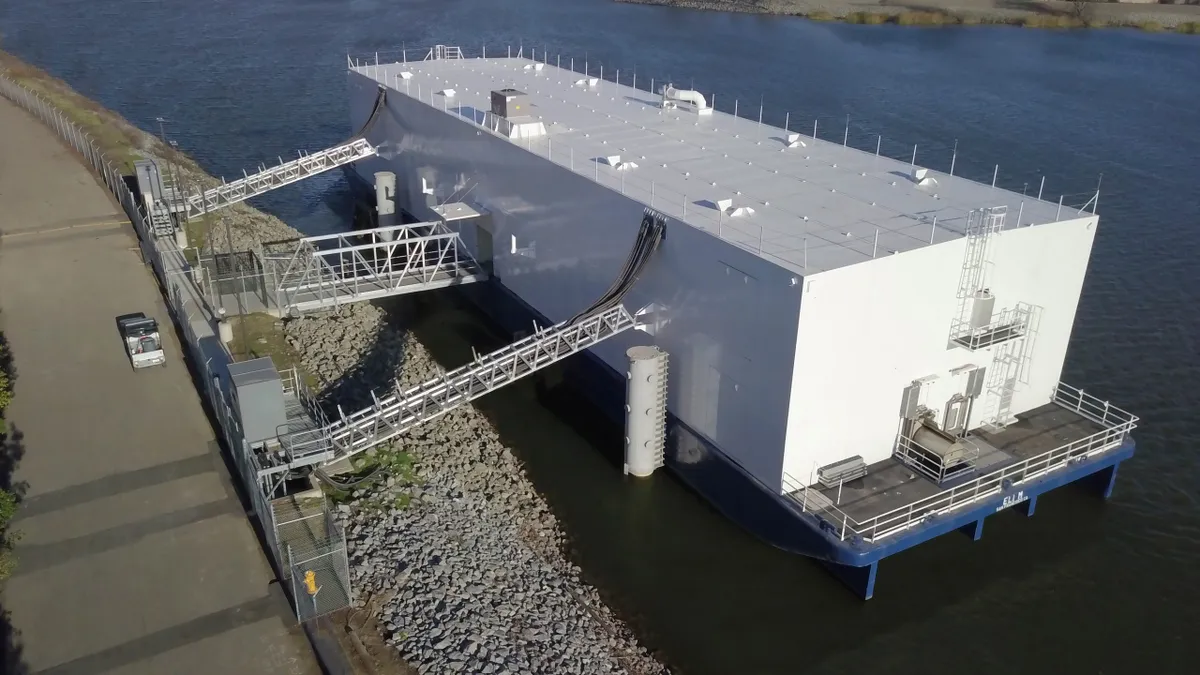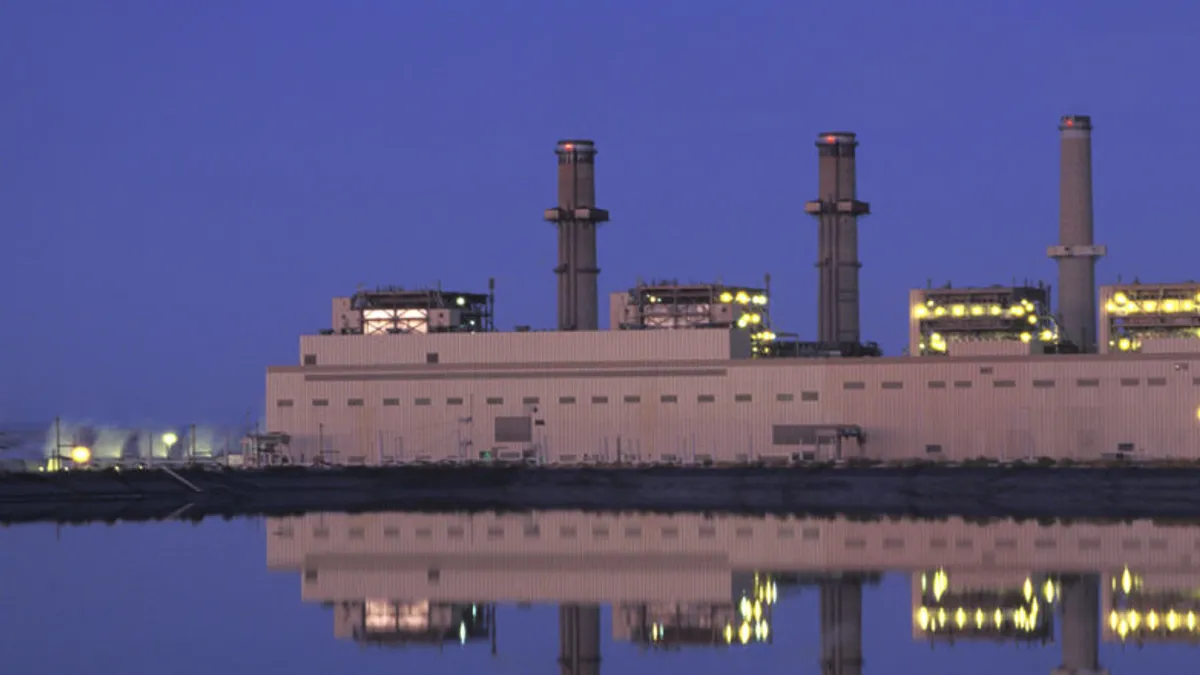The following is a contributed article by Richelle Elberg,a principal research analyst overseeing Navigant Research's Digital Energy research and heading up the Energy Connectivity service.
Historically, utilities have deployed application-specific networks, typically from within a given department for a defined purpose. As a result, utilities may be managing a dozen or even twenty-odd standalone communications networks.
Looking ahead, utility networking managers must take a more holistic approach to bring future-proof connectivity throughout their territories.
There are a growing number of ways utilities wish to use data — for automation and control, advanced analytics, distributed energy resources (DER) integration, etc. — so the bandwidth and latency requirements for networks are rising. Meanwhile, security concerns and the instances of power utility hacking events are growing in step with the criticality of these networks.
On top of these challenges comes the difficulty of attracting qualified networking personnel. The Internet of Things (IoT) is a red-hot phenomenon and young professionals joining the workforce may prefer work at an exciting tech giant — or startup — over an old-school electric utility.
These drivers and challenges mean that utility management must take a proactive, long-term approach to create networking strategies that encompass a vision for the next several decades. Utilities today face a complex, perhaps bewildering array of possible strategies thanks to a variety of new networking technologies, purchasing models, and spectrum options combined with the legacy networks currently under management.
Top Trends
The two biggest trends in utility networking center on the following:
- Bringing connectivity to distribution-level substations, typically with fiber or microwave.
- Ongoing deployment of field area networks (FAN) for both smart meters and, increasingly, distribution automation and DER integration.
The first is a much less fractured but active space, particularly where landline phone companies are sunsetting copper networks. Utilities need greater visibility for their high value assets in distribution substations as well as a robust wide area network for backhaul of data collected in the FAN.
Navigant Research expects investment in fiber networks by utilities to accelerate through 2029. Utility fiber investments are further explored in the Building the Fiber Backbone for Utility Needs Today and Tomorrow report.
In terms of the FAN, utilities still have all of the options they have used since 2009, plus a few more.
They can and have used unlicensed mesh networks, point-to-multipoint offerings, power line carrier and public cellular (3G and 4G) networks. These remain the dominant networking choices made by utilities — but there are a growing number of low power wide area (LPWA) options that may cost less and perform adequately for certain applications — in particular asset monitoring or basic meter reading.
LPWA networks include those using the LoRa standard, the Sigfox proprietary standard and LTE-based options including narrowband (NB) Internet of Things, known as NB-IoT and LTE Cat M1.
Cellular carriers are deploying the LTE-based options now; both AT&T and Verizon in the U.S. have already deployed Cat M1. There are many startups promoting private NB-IoT and Cat M1 networks for IoT applications as well.
What makes LPWA options interesting is their lower price, their long (10 plus years) battery life, and their typically better reach into buildings or basements. For these reasons, LPWA options are widely explored for water and gas utility FANs.
Also, smaller utilities such as municipals or cooperatives, may be attracted to LPWA options when offered in a networking as a service (NAAS) model. The NAAS model is a tougher sell for large, rate of return regulated investor-owned utilities (IOUs) — although increasingly vendors offer a long-term contract that can be capitalized as a CAPEX investment.
New spectrum options are coming
In addition to the newer LPWA technology options, utilities have a growing interest in licensed or shared spectrum options, potentially for the deployment of private 4G LTE networks.
LTE is the same technology used by most public cellular carriers. It is robust in terms of capacity and latency and will also evolve to support 5G technologies as they emerge. In other words, it meets the future-proof goal.
In order to deploy a private LTE network, such as is being trialed by Ameren in Illinois and Missouri, utilities need access to licensed spectrum.
In the Ameren pilot, the utility is working with PDVWireless (PDV), which is headed up by Morgan O'Brien of Nextel fame. Ameren has been granted an experimental license to conduct its pilot in PDV's 900 MHz airwaves.
Meanwhile, the Federal Communications Commission (FCC) issued a Notice of Proposed Rulemaking on PDV's planned realignment of the 900 MHz band in March 2019. It is expected to make a final ruling in the summer of 2019.
PDV owns around 60% of the licenses between 896 MHz and 901 MHz across the U.S. While some utilities have opposed the PDV effort at realignment (most notably Florida Power & Light) due to concerns over disruption to their land mobile radio systems, the realignment is likely to be approved sometime this year.
This will make 6 MHz of dedicated spectrum potentially available for utility networks.
In May 2019, PDV announced the formation of an industry advisory board as a part of its ongoing project with the US Department of Energy's (DOE's) National Renewable Energy Lab. DOE awarded the project high impact status, which is given to projects that satisfy the goals of DOE's grid modernization initiative.
The board is made up of six utilities that provide service across 18 states, including Consumers Energy, Duke Energy, Evergy, Eversource Energy, Holy Cross Energy and Xcel Energy.
Share and share alike (spectrum that is)
The Citizens Broadband Radio Service (CBRS) Alliance's efforts at making OnGo — the CBRS Alliance's commercial name for shared spectrum at 3.5 GHz — available for utility applications is also making strides.
In 2015, the FCC authorized the use of the 3.5 GHz band for shared wireless access, opening previously protected spectrum used by the U.S. Navy and other U.S. Department of Defense (DoD) members. The CBRS band is unique due to its shared spectrum assignment characteristics.
To use CBRS spectrum, one must request and be assigned a band by a Spectrum Allocation Server (SAS) programmatically.
The SAS calculates radio frequency density and channel availability using terrain and radio propagation data before authorizing the request. When the use of the spectrum is no longer required, the channel is freed for use by other requesters.
At the end of 2016, the FCC approved seven SAS system administrators: Amdocs, Comsearch, the Cellular Telecommunications Industry Association, Federated Wireless, Google, Key Bridge and Sony Electronics.
FCC rules define three levels of priority access in descending order for assigning use of CBRS spectrum:
- Incumbents: Existing users (e.g., U.S. Naval Radar, DoD) get permanent priority as well as site-specific protection for registered sites.
- Priority Access Licenses (PALs): Organizations can pay a fee (at auction) to request up to four PALs in a limited geographic area for 3 years. Only the lower 100 MHz of the CBRS band will be auctioned off with restrictions of a maximum of seven concurrent 10 MHz PALs allocated within the same region. The cost of PALs will be proportional to the population density of the geographic location. This enables rural network operators to protect their license at a lower cost.
- General Authorized Access (GAA): The rest of the spectrum will be open to GAA use and coexistence issues will be determined by SAS providers for spectrum allocation.
Table 1 depicts how CBRS compares with the more traditional unlicensed and licensed spectrum models.
Table 1 CBRS vs. Traditional Licensed and Unlicensed Spectrum Licenses
|
Metric |
Licensed |
Unlicensed |
CBRS |
|
License Rights |
Exclusive |
Non-exclusive |
Use it or share it |
|
License Area |
Defined geographies |
N/A |
Variable, with real-time management |
|
License Cost |
Expensive |
Free |
Monthly fee for SAS, additional local protection for a fee at auction |
|
Enforcement |
Regulatory |
Power limits |
Central coordination service — SAS |
|
Technologies |
LTE, Global System for Mobile Comms |
Wi-Fi, MulteFire |
LTE |
|
Deployed by |
Carriers, Critical Infrastructure |
Anyone |
Enterprises, carriers, managed service providers |
The upshot of the CBRS band is that PALs should cost less than traditional licensed spectrum, making it easier for private entities, such as utilities, to access. At this time the FCC is still evaluating SAS solutions for commercialization of the PAL tier, although interested utilities can plan for LTE deployment under the GAA tier.
More is not always better, but it is more
Over time, Navigant Research expects that certain networking practices will rise to the top in terms of popularity, particularly with large IOUs.
But when looking beyond the 100 or so IOUs in the U.S., there are still nearly 3,000 organizations with varied needs and resources. Many smaller municipalities and cooperatives are expected to consider LPWA options in a NAAS purchasing model, particularly where smart meters have not yet been deployed.
IOUs may increasingly consider private LTE network deployment, but it is not clear if their spectrum selections will standardize on any one band.
It is certain, however, that a massive change in both networking strategies and technology choices is coming over the next decade and beyond.

















